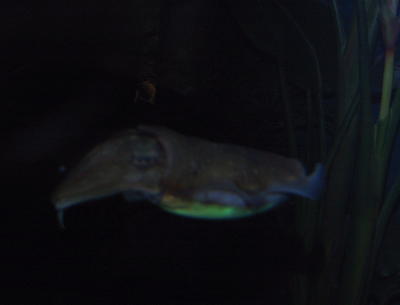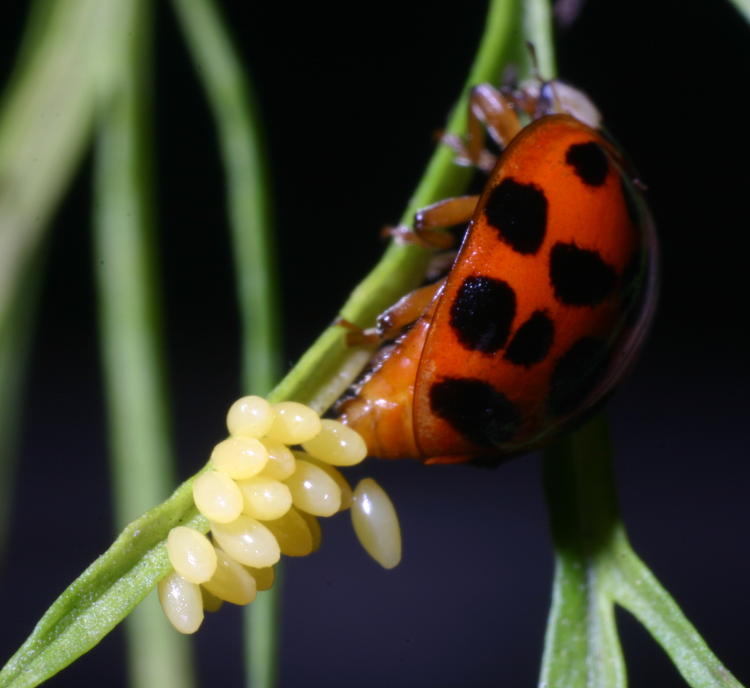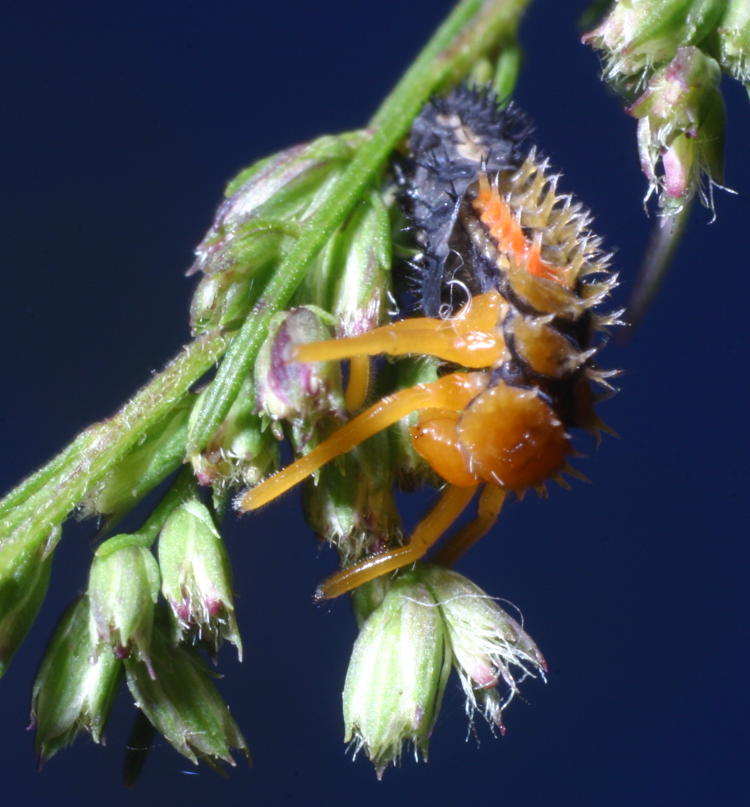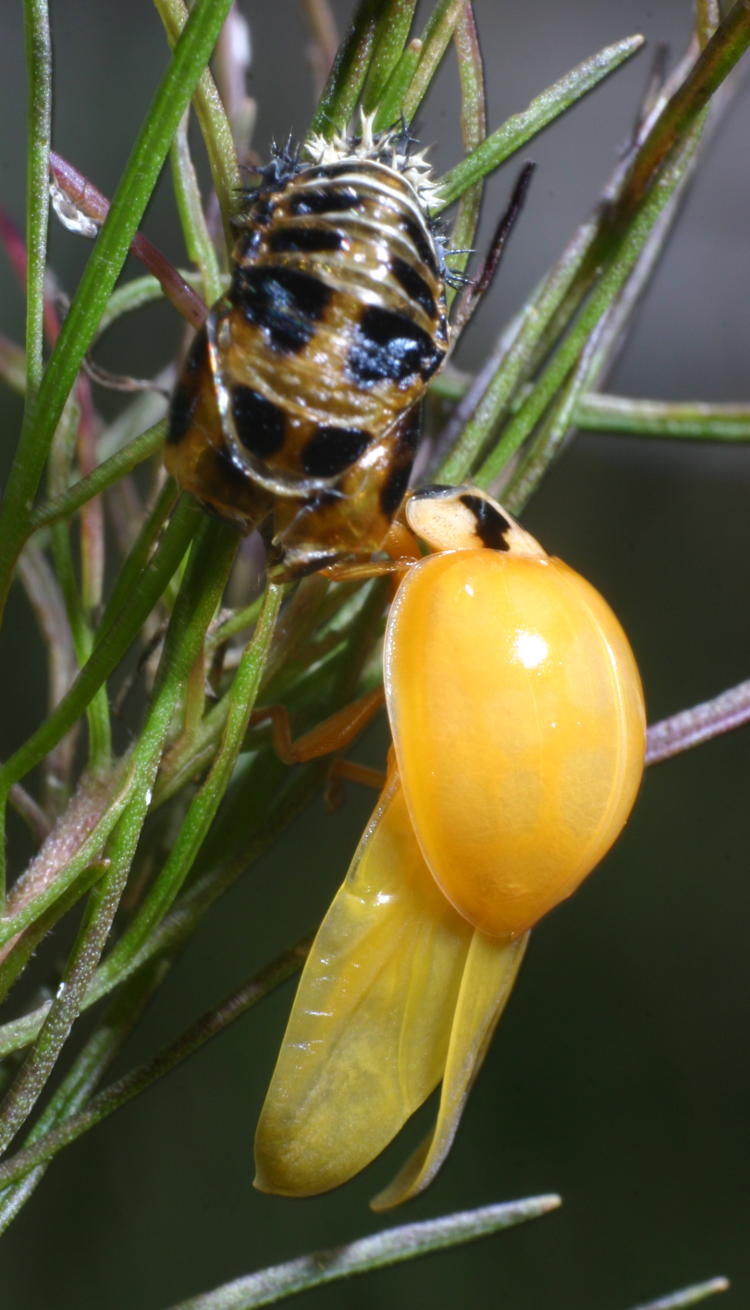We’re only going to deal with two years this week – I have photos from four, I believe, but two were noteworthy (for my own personal standards of ‘noteworthy,’ and we all know how those are.) We will begin with 2006, during a visit that The Girlfriend and I made to the North Carolina Aquarium at Fort Fisher.

This is the unaltered version, but I’ve used it before after editing out the obvious distractions from the background. It’s either a European/common cuttlefish (Sepia officinalis) or a pharaoh cuttlefish (Sepia pharaonis) – I failed to check the ID plaque at the time. It was the only time that we’ve seen the cuttlefish on display, and they were fascinating to watch, maneuvering around by the rippling of that fin-skirt around their bodies, wooing one another, and at one point extending their tentacles far our in front like a trunk. The eyes, believe it or not, are open – they just have very odd queasy-smiley pupils that are mostly closed against the light here.
 The educational video playing nearby informed us that cuttlefish can display bioluminescence from their undersides during courtship, and we were lucky enough not only to see it, but to capture it in images as well, as the pic at right shows. Excuse the lack of quality, but let’s be real – capturing bioluminescence is tricky at the best of times, much less handheld in an aquarium (with the Canon Pro90,) but if you check, it’s actually visible in the first photo above as well, even with the flash illuminating the cuttlefish. However, the drawling adolescent that proclaimed, “That’s a squeed,” produced a catchphrase between us that remains to this day.
The educational video playing nearby informed us that cuttlefish can display bioluminescence from their undersides during courtship, and we were lucky enough not only to see it, but to capture it in images as well, as the pic at right shows. Excuse the lack of quality, but let’s be real – capturing bioluminescence is tricky at the best of times, much less handheld in an aquarium (with the Canon Pro90,) but if you check, it’s actually visible in the first photo above as well, even with the flash illuminating the cuttlefish. However, the drawling adolescent that proclaimed, “That’s a squeed,” produced a catchphrase between us that remains to this day.
And now we go to 2012. I’d said before that 2012 was easily the most productive for arthropods for me, and this is a prime example.

Last week we got to see lady beetle nymphs hatching from eggs, and this shows you how unspecific time frames are to them, because here we are a week later seeing an adult laying some. I couldn’t tell you the exact species, just the genus Coccinellidae, and the action, um, wasn’t – she remained largely unmoving throughout a long shooting session. While a time-lapse sequence might have shown the process, it might not have, too – these are flash photos, and the dog fennel plant that she was using was very fine and swayed easily in the wind, so leaving the camera on a tripod with the intervalometer to fire off shots every minute or so would most likely have resulted in a lot of unfocused images.

Elsewhere on the same plant (I believe, anyway – it was a huge favorite of the lady beetles that year for sure,) we have a nymph, second or third instar I suspect, emerging from its molted exoskeleton – the bright colors will fade within a couple of hours to leave a spiky-looking black ‘bug’ with orange markings as the new exoskeleton hardens. Presumably these bright colors are aposematic, ‘keepaway’ markings indicating that the nymph is bad-tasting or toxic – I know the adults can exude their own ‘blood’ (hemolymph) to ward off predators. Those spikes on the back look nasty, but they may simply be camouflage – I’ve handled them at this stage and they’re unnoticeable, so not terribly hard and not capable on introducing an irritant to something human-sized, anyway. Just chock full of non-information today, aren’t I?

While it took years to finally capture a molting of anything, beginning to end, I was able to shoot a lot of frames of this newly-emerged final instar, otherwise known as an adult, as it was drying its wings. That’s the old exoskeleton/cocoon at upper left – they attach themselves to a surface for several days while they pupate into the familiar adult form. The wings themselves will become a translucent brown like tinted glass and normally remain folded up underneath the elytra, the big domed ‘shell’ – which in itself is not yet showing the typical black spots. But if you look very closely, you can see the places that will turn color, the pattern of spots visible though the pigment hasn’t developed yet. This entire process is of course very slow, generally taking about two hours before the adult would be capable of flight, so it’s not like I had to be right on top of things, firing off frames madly, to get a sequence of this development.
But just so you know, I have 183 images in the Arthropod 2 folder for this day alone, of the myriad subjects that I was finding. Someday history books will talk about how 2012 was one of my most productive years.




















































